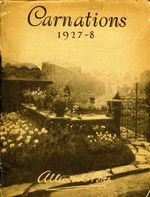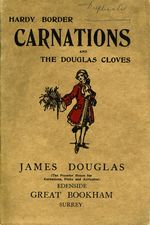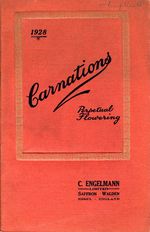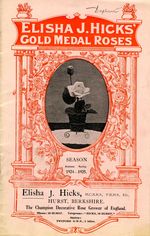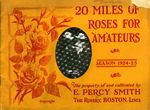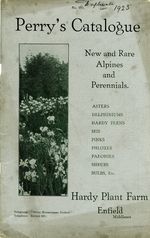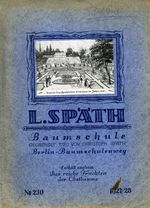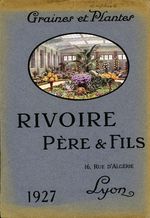“These are days of economy, when thought and knowledge must take the place of lavish and wasteful expenditure”
Cutbush Barnet Seeds c. 1925
Between the wars in Great Britain, fewer estate owners could afford to install and maintain extravagant gardens, but there were still many plants in catalogues for herbaceous borders, as well as woodland, alpine and wild gardens. In the aftermath of the First World War, British catalogues were often printed on less expensive paper than before 1914. They were generally more austere, with less superfluous sales copy; however, they present a huge selection of plants, with many new varieties. Flowering perennials, evergreen shrubs, bulbs, and exhibition flowers feature heavily in the British catalogues of the 1920s, with many new varieties in catalogues devoted to only one or several species. Roses, iris, daffodils, begonias, gladioli, dahlias, delphiniums, rhododendrons, daffodils, heathers and carnations are some of the best-represented plants. Many companies listed and photographed the silver trophies they won for their varieties and show displays.
The OSU collection contains catalogues from three of the most famous carnation breeders in Great Britain: Allwood Bros (1927), James Douglas (1926-7), and C. Engelmann (1928). The rose catalogues of Elisha Hicks (1924-25) and E. Percy Smith mention particularly fragrant rose varieties. A run of Perry’s Hardy Plant Farm catalogues from 1921 to 1929 contains their vast array of alpines and perennials. John Waterer & Sons, from whom the collection has sixty catalogues from 1923-1946, specialized in rhododendrons, as well as roses and perennials. One of Germany’s oldest and largest nurseries was the firm of L. Späth in Berlin (est. 1720), whose catalogue cover of 1927 shows an engraving of their nursery in 1828. Some extensive general seed catalogues are those of Sutton & Son, Dobbie’s, Ryder & Son, Thompson & Morgan, JR Pearson & Sons, Forbes of Scotland, Bee’s of Ireland, and Rivoire Père & Fils of France.

